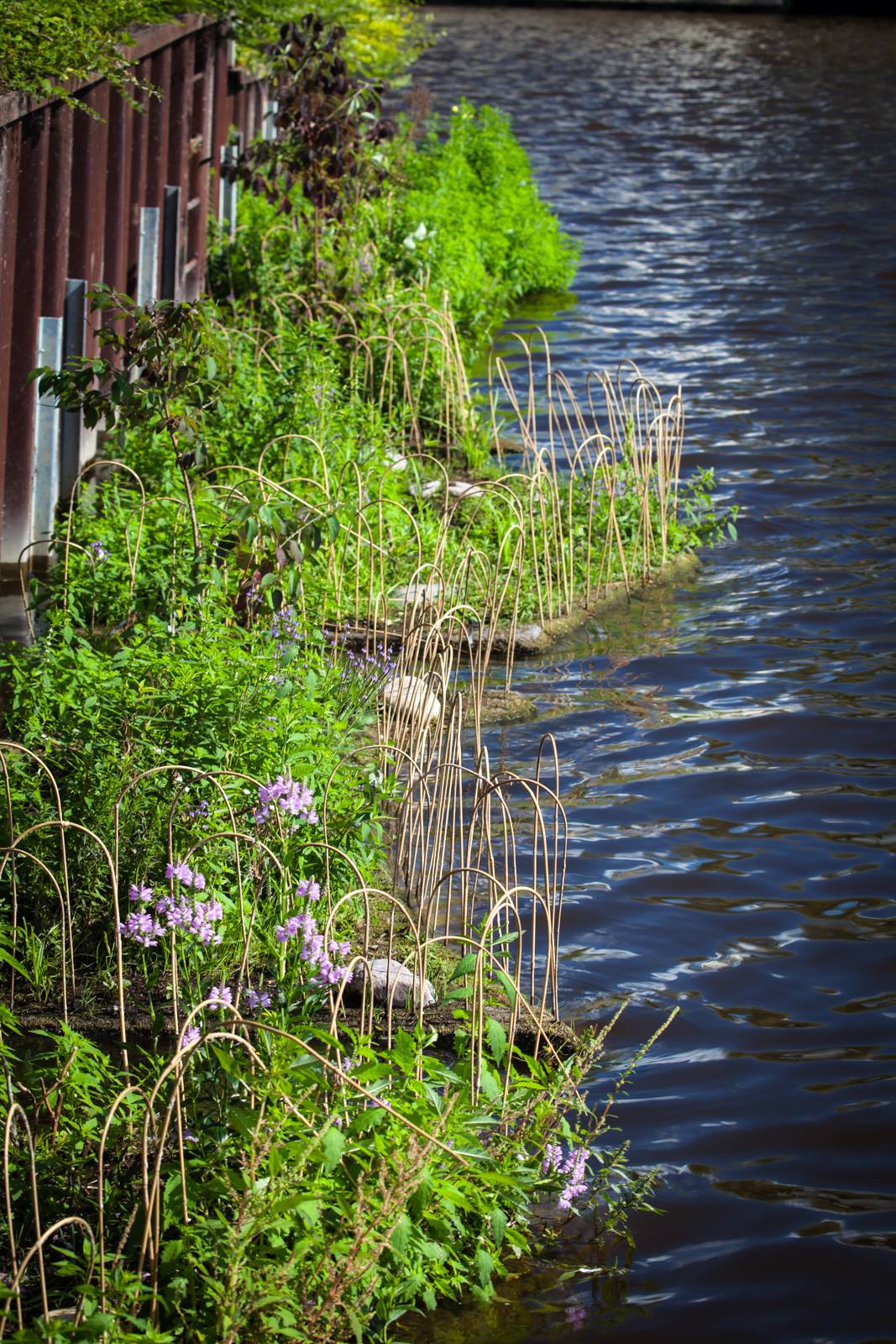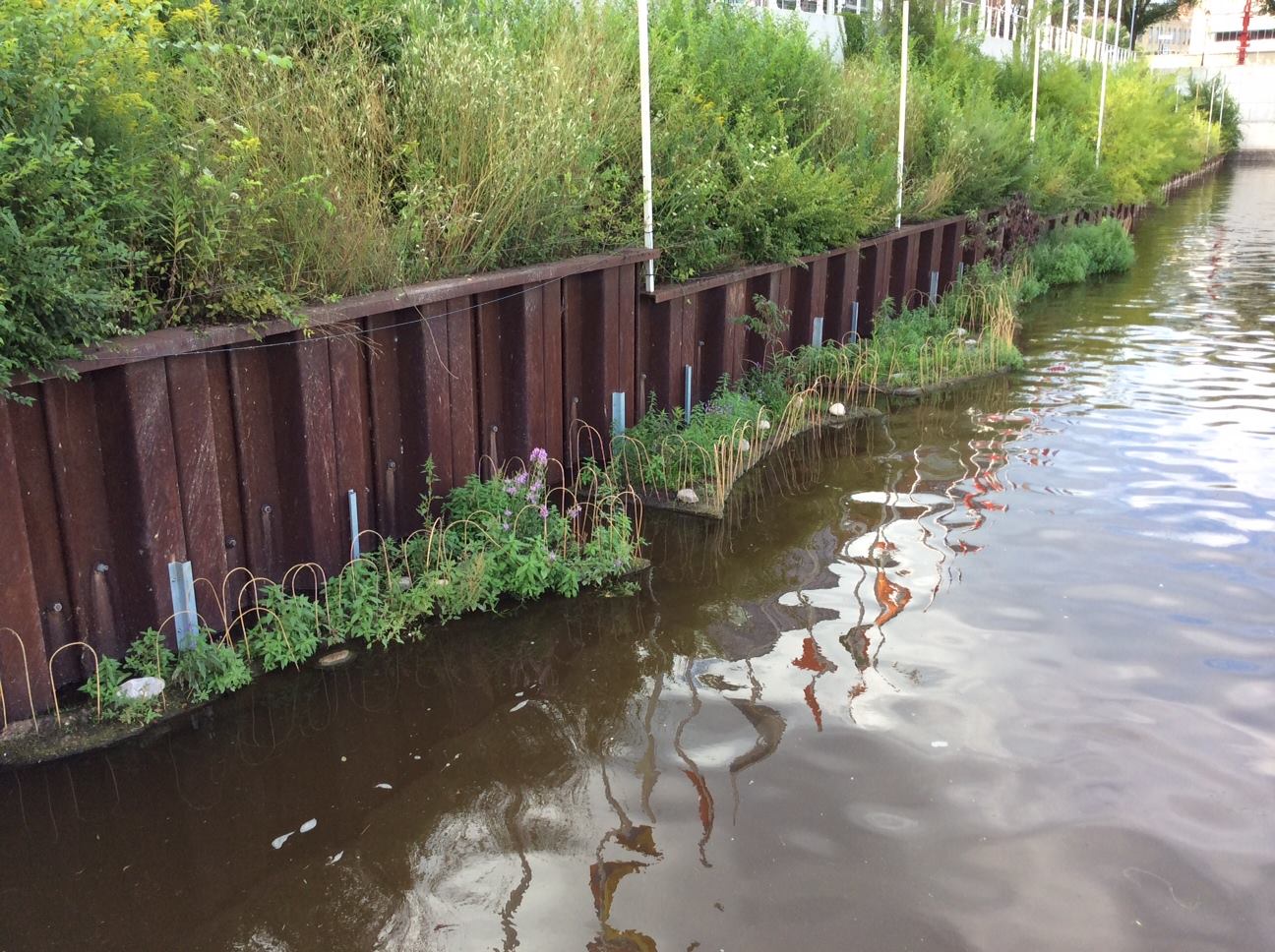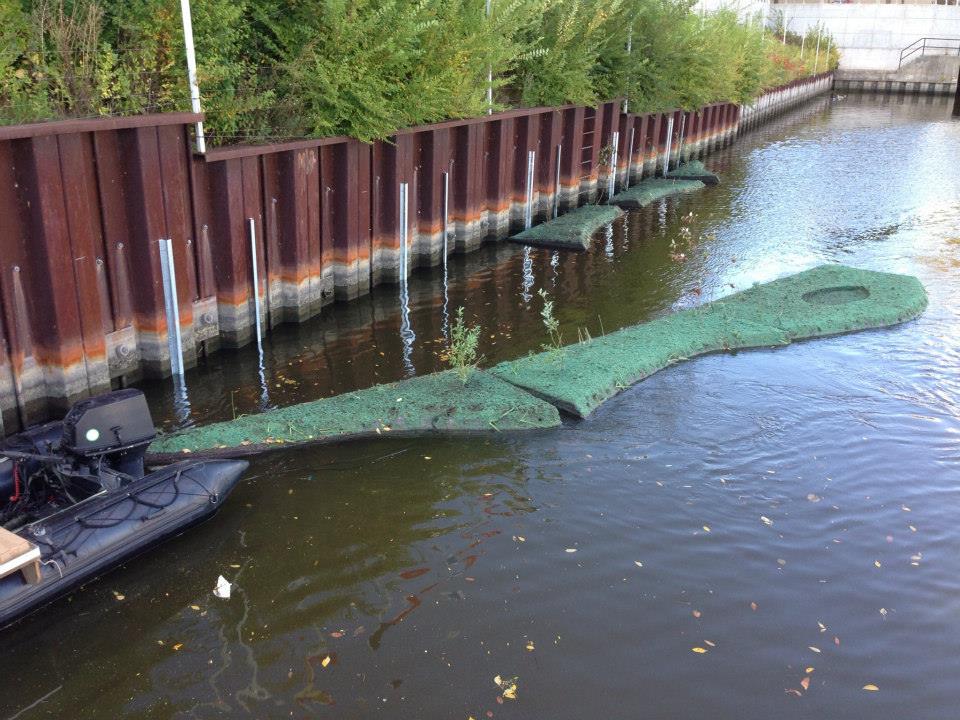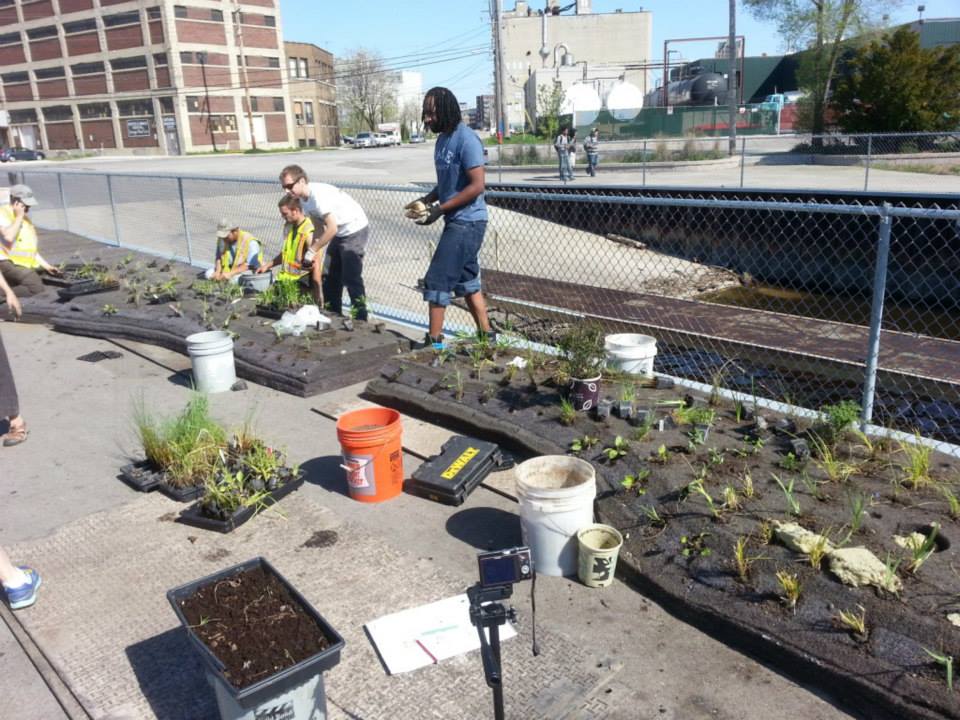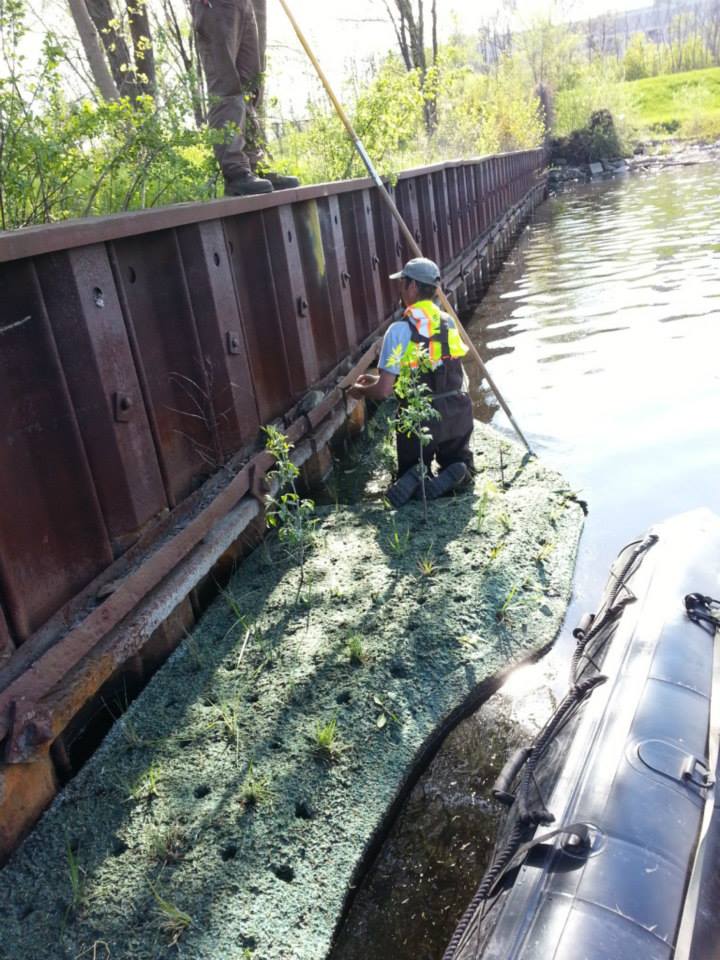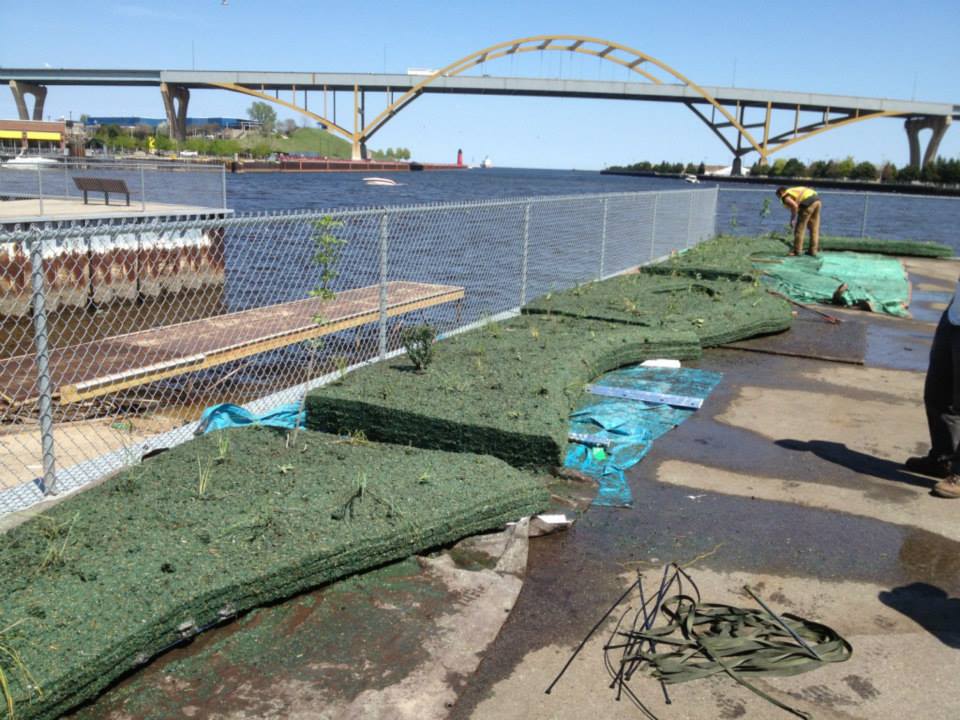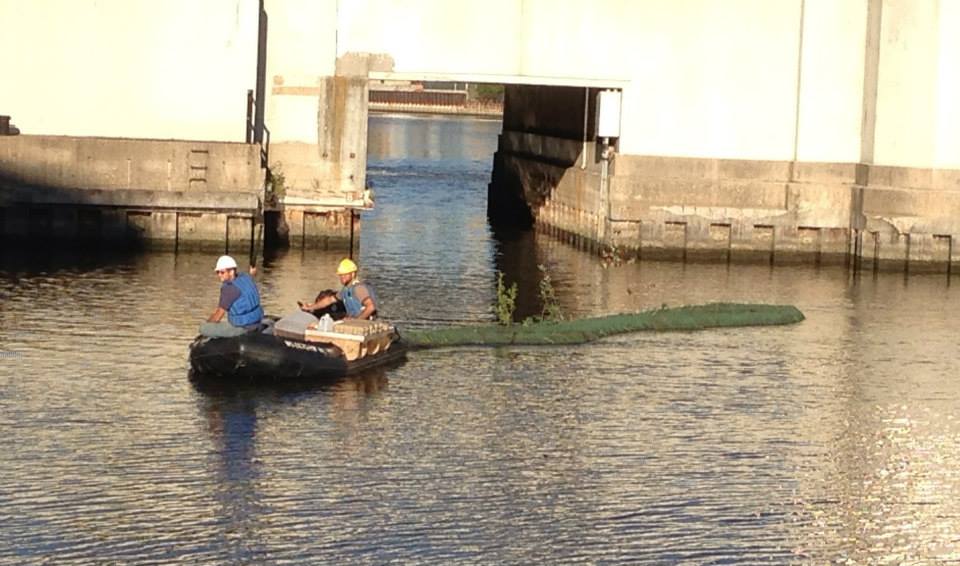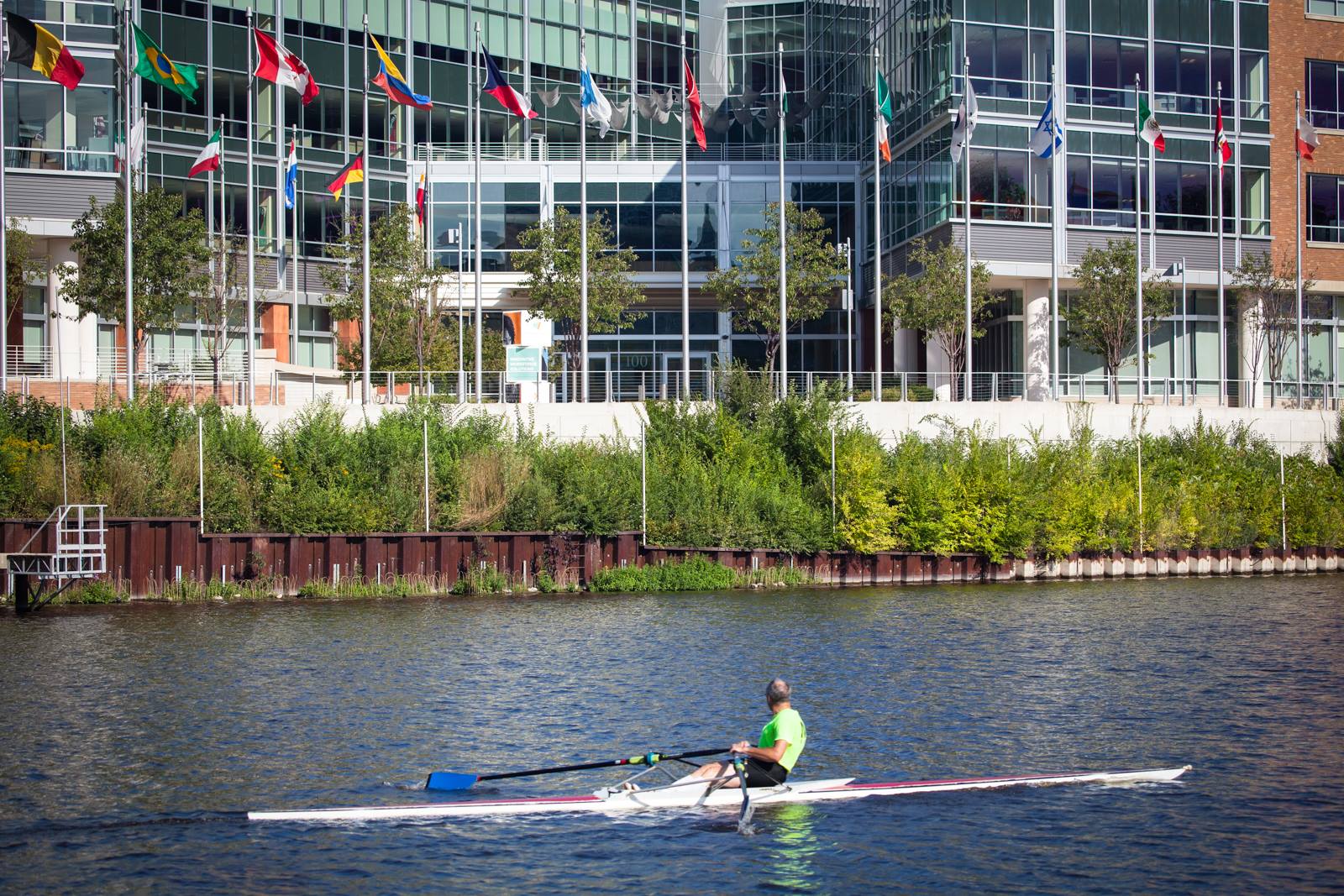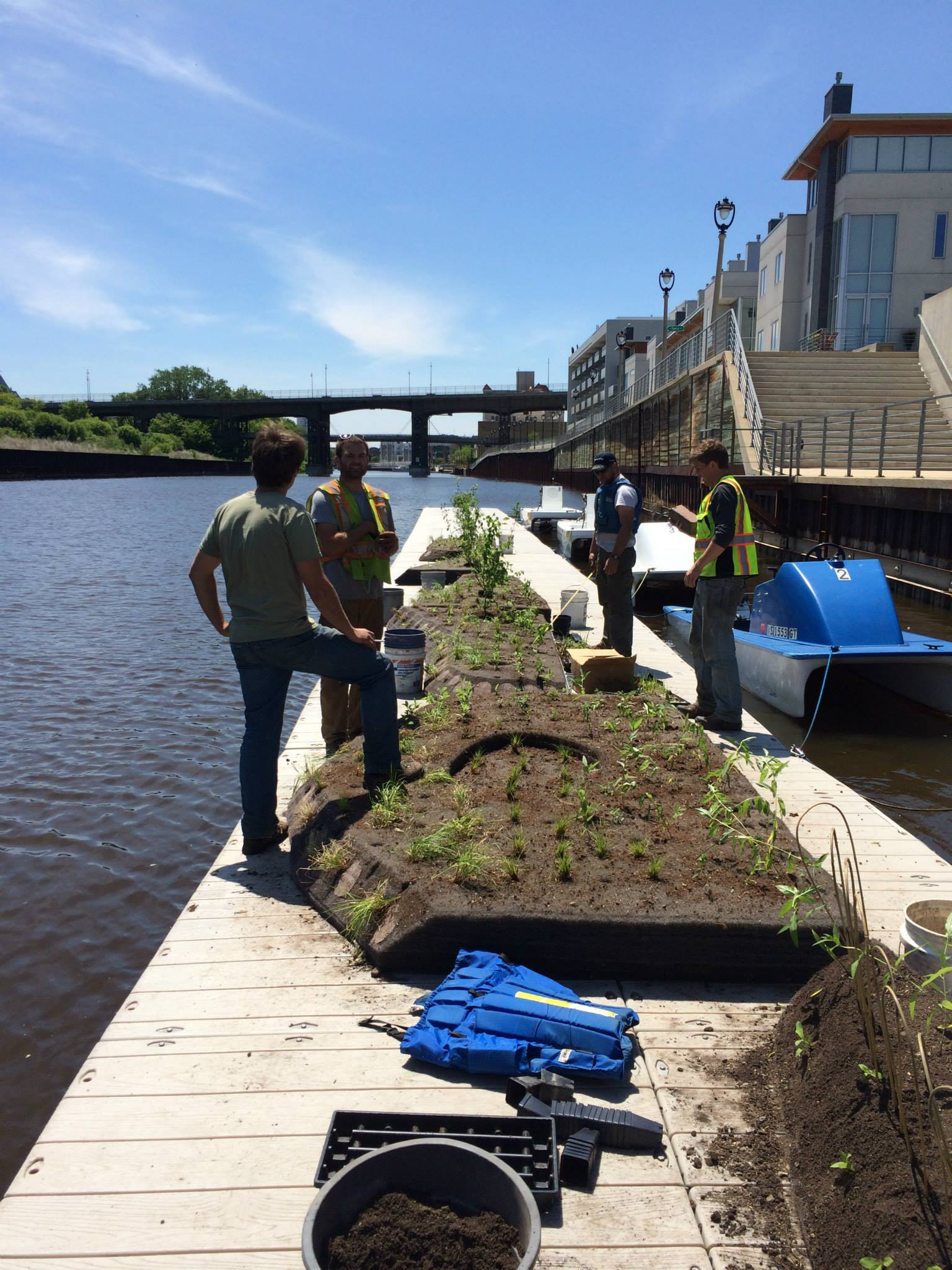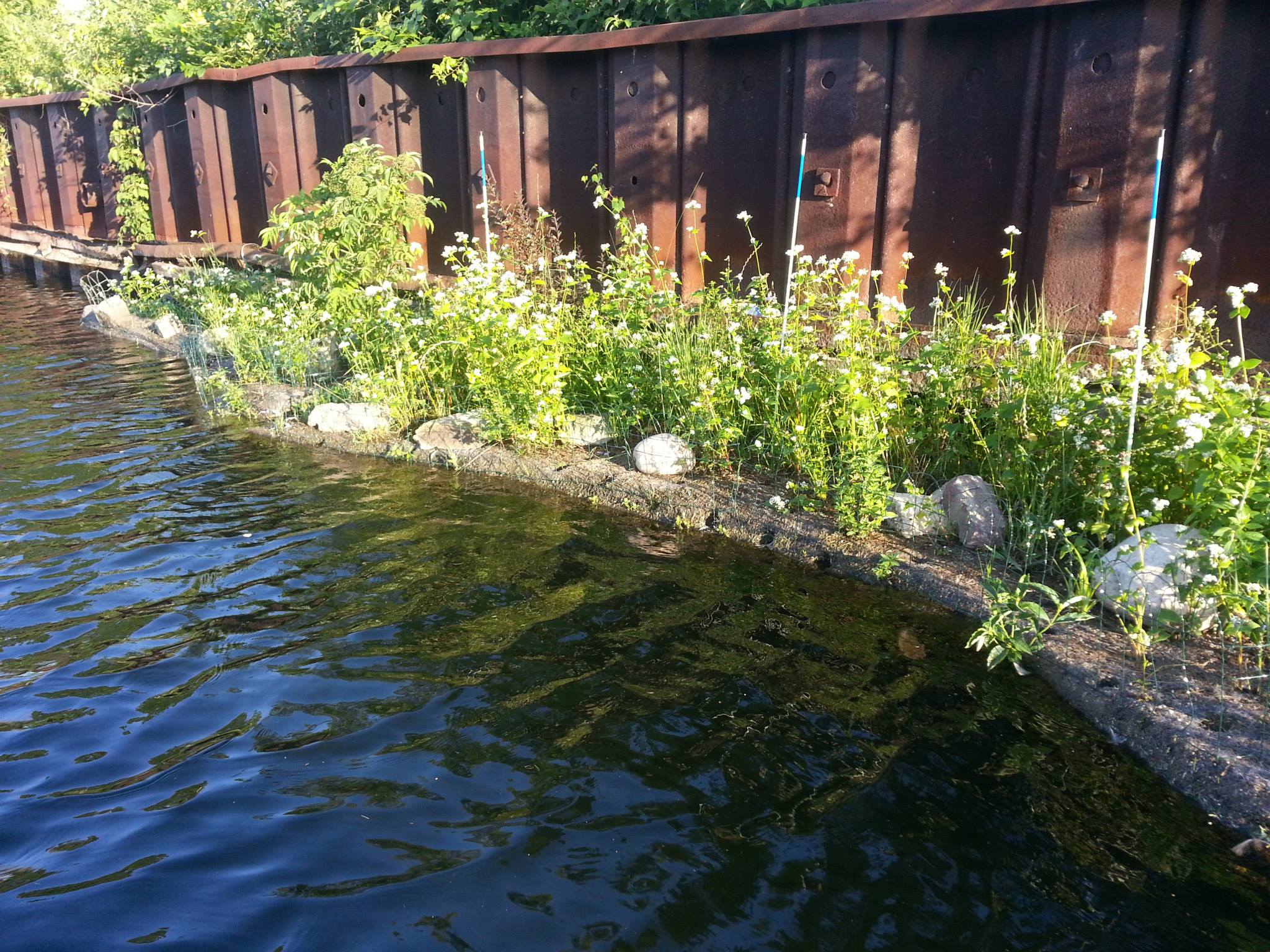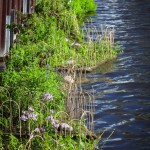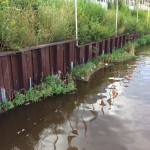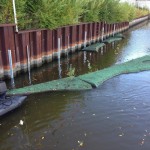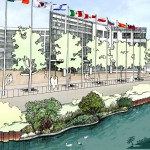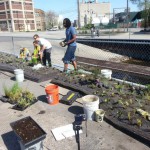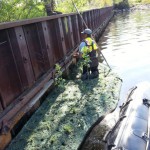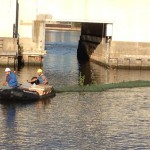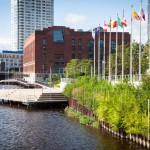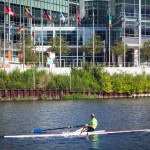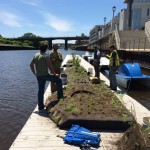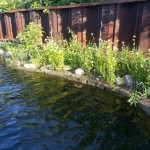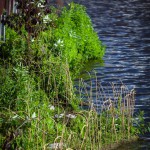Floating Islands in Milwaukee River Estuary for Improved Long-Term Spawning
The project seeks to improve fish habitat and spawning patterns within the Milwaukee River Area of Concern by creating habitat where none exists, along the steel and concrete walls of the estuary. By reducing barriers between upstream spawning/nursery habitat and Lake Michigan, we allow fish to more successfully complete their lifecycle by providing sources of food, shelter, and oxygen along their migration through the estuary. We are using the Floating Islands technology to place four wetland islands [80 feet by 7 feet] in the Milwaukee and Menomonee River portions of the estuary. The islands are an innovative technology with a wide variety of uses for water quality and fishery enhancement by bio-mimicking wetlands. Wetlands are important to the Lake Michigan fisheries, as an estimated over 80% of native Great Lakes fish rely on wetlands for part of their lifecycle. The technology uses a blend of synthetic and natural floating media, from which plants grow and form the basic building block for the bottom of the food chain, the periphytic organisms and biofilms. These organisms quickly colonize and create food sources on which the smallest fish and zooplankton feed. This technology represents some of the most current thinking about how waterways can be stewarded towards health and fishery abundance. Marek Landscaping, LLC brought the technology to Milwaukee, co-authored grant applications, developed a design and anchoring system specific to the estuary, assisted with the fabrication, and installed two floating islands in 2013, and two more in 2014. Funding for the project comes from the Great Lakes Restoration Initiative and the Fund for Lake Michigan.
The project was the first one highlighted in the “Wisconsin Great Lakes Restoration Projects Producing Results for People, Communities” publication produced by the Healing Our Waters-Greats Lakes Coalition and provided at the 2013 Great Lakes Restoration Conference.

